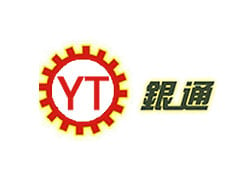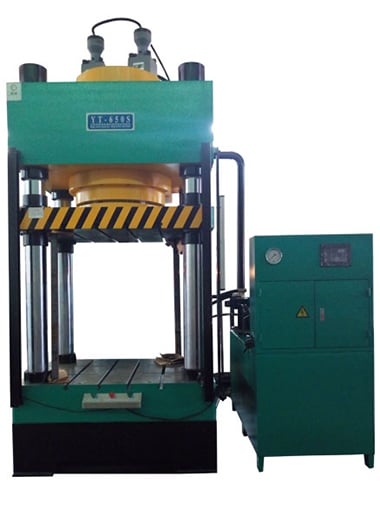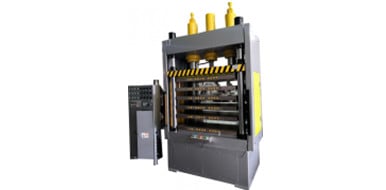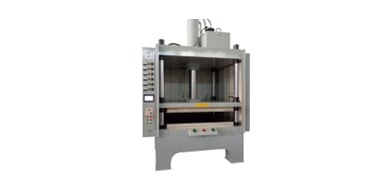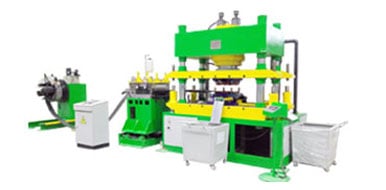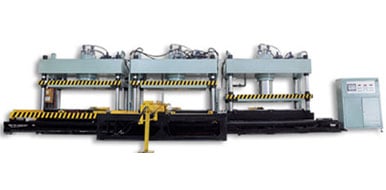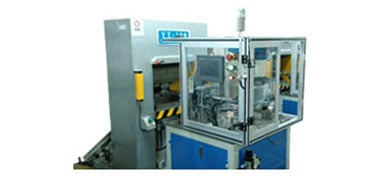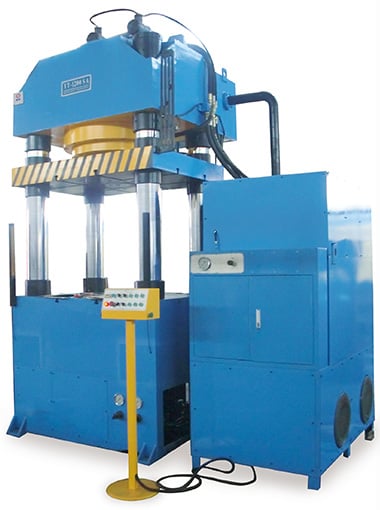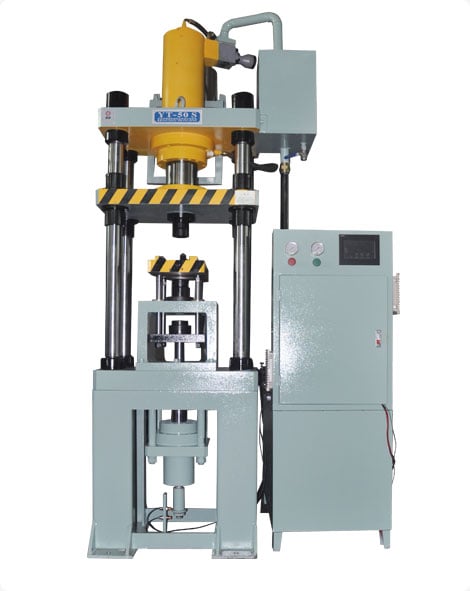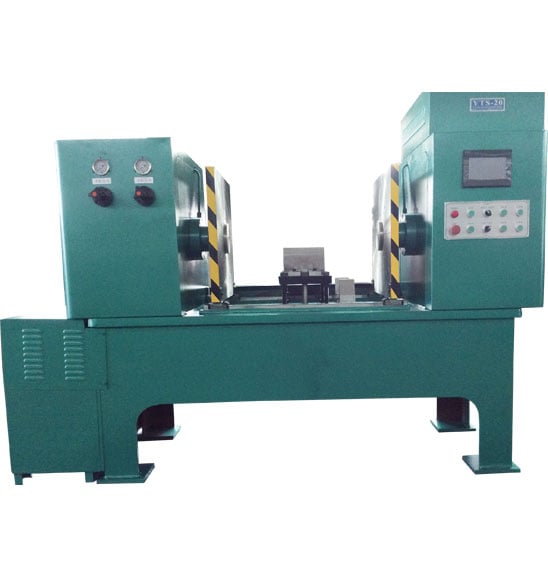How to Make a Hydraulic Press
time:2023-07-02 views:(点击 896 次)
Hydraulic presses are highly versatile tools used to form various workpieces. Controlling both their force output and energy use is paramount.
Home-made hydraulic presses can be created easily using a hydraulic jack. When welding, take care to adhere closely to the drawing.
Frame
A hydraulic press is a type of machine that utilizes a hydraulic cylinder to exert force against a workpiece, generated by piston controlled by hydraulic fluid in its chamber. A press can also be used to deform materials like plastic and metal by applying pressure directly against it.
There are various kinds of hydraulic presses, each offering different advantages and disadvantages. Some models are more versatile while some excel in certain applications. When choosing which hydraulic press best meets your needs, consider factors like workpiece size/capacity capacity as well as pressing needs such as desired power output from your press.
One key advantage of hydraulic presses is that they deliver consistent pressing strength throughout their stroke, making them ideal for applications requiring precise pressure measurements. Furthermore, a press can also be programmed to make multiple passes through its die, making high-volume production runs possible with ease.
Hydraulic presses are constructed using steel or aluminum frames welded together, with their height depending on the height of your hydraulic ram or jack. You'll first need to scour through your junk pile in search of "U" or "IL" channel pieces that resemble letter "U" or "L". In addition, you will require 6 to 7 foot pipe to connect it to the platen - also referred to as an adaptor pipe.
Assemble an anti-slip metal sheeting frame. Add levers for operating the ram and press. Cut all required metal parts for assembly before drilling any required holes for assembly - make sure to wear protective gloves while cutting, drilling or assembly work; as well as work gloves to guard your hands from vibration caused by the ram.
Once the frame has been assembled, it's important to install and connect a hydraulic cylinder. When choosing your type of cylinder it is vital that it fits with the machine - be careful that its threaded connection allows you to easily change its position or orientation as required.
Cylinder
A hydraulic press relies on its cylinder as its central component. Crafted of steel, its design ensures it can withstand intense pressure throughout its lifespan. Equipped with ports at either end to allow hydraulic fluid in and out, as well as an extendable piston rod which extends or retracts with system pressure, its size can be tailored according to desired force of the hydraulic press.
The piston is the component responsible for creating pressure zones within a cylinder and must fit elastomeric or metal seals and bearing elements with precision. A cylinder may either be single acting (with one chamber receiving pressurized hydraulic fluid while spring loaded retraction takes place from another), or double acting (two equal pressure zones that together exert force according to Pascal's principle).
Cylinders are often designed to withstand specific test or nominal standard pressures, although this will depend on their use and application. A good hydraulic press should operate well under most circumstances; corrosion protection, pitting protection and wear protection must all be properly addressed for maximum longevity and avoiding seal scraping which could compromise hydraulic systems and lead to leakages of hydraulic fluid.
To maintain a functional cylinder, regular maintenance is key. Start by replacing O-rings and seals as soon as they show signs of wear; ensure they're lubricated with clean hydraulic fluid before inserting them back into their positions in the cylinder. Next up is installing the cap/glands back onto it all before testing its rod for any issues.
An excellent hydraulic press should offer customizable settings that meet the user's individual requirements, including ram force, dwell duration and press direction settings. Furthermore, you should opt for one that meets OSHA or industry-related safety standards such as ANSI for maximum protection and peace of mind.
Pedal
The pedal is a solid lever connected to a pivot point above the driver's feet area, connected by its end to a rod using clevis pins and then to a master cylinder through a hydraulic fluid line connected directly. When the driver presses down on it, this forces out piston from master cylinder and thus presses on slave cylinder, which in turn applies pressure onto clutch pressure plate or flywheel as per design.
Hydraulic presses offer many advantages over mechanical presses in terms of their force application to material to be formed and the user's needs. Furthermore, hydraulic presses can also form larger parts than mechanical presses while being more versatile as they can operate at multiple speeds.
To operate a hydraulic press effectively, its operator must ensure the area surrounding it is free from obstructions and clear. After loading stock into the die and positioning it appropriately, they should then activate their hydraulic system using a handle pumping oil into cylinder and activating hydraulic system pump. When desired pressure has been achieved, their press cycle should be stopped by turning off valve.
An essential feature of any hydraulic press is the front safety guard, which serves to safeguard its operator against debris or materials that might escape during operation and cause injury if they were to get caught in its path. Without such protections in place, serious bodily harm could occur from standing directly under these materials if they emerge into their path of travel.
To optimize your use of a hydraulic press, it is vital that the correct accessories are installed. V blocks are an invaluable way of improving press operation; their presence helps secure workpieces while improving accuracy and uniformity in product output. They also prevent the ram from striking workpieces during production - it is best to opt for high quality blocks made by experienced companies.
Hydraulic pump
Hydraulic pumps generate fluid pressure that operates a piston in a master cylinder and exerts force upon whatever lies on its plate below it. Pascal's law states that any mechanical force applied over a small area generates large fluid pressure - changing pump type allows users to customize force output.
There are multiple methods for making hydraulic pumps, including gear, vane and piston pumps. Each uses its own mechanism to generate pressure and flow; but all three perform the same function: moving piston back-and-forth within a cylinder to form chambers that expand and contract as they pass through a rotor to create vacuum and increase pressure.
These hydraulic pumps can be used to compress, assemble, draw, punch, trim, stamp and shape materials for various industries including automotive, aerospace, metal fabrication and construction. They may also be utilized for testing purposes like mold-making and material testing.
To create a hydraulic press, you will first need to cut and drill metal parts for its frame and cylinder. Next, it is vitally important that the hydraulic pump can withstand your desired force - for instance if you plan to crush things, choose one capable of withstanding maximum pressure levels.
Hydraulic presses may be commonly associated with weapon-making, but they have many other applications as well. Crushing metal objects or compressing larger items is one such use for hydraulic presses; another frequent application for them in sword-making involves pressing together metal sheets under high levels of pressure into an end product.
Considerations must be given when choosing a hydraulic pump, including volume of fluid per revolution, working pressure capability and horsepower ratings, operating specifications and positive/negative displacement models. Positive displacement pumps offer constant delivery rates while negative displacement pumps alter delivery rate according to geometry of oil-carrying chambers; more precise geometry increases pump efficiency.
Link to this article: https://www.ihydraulicpress.com/nsn/3858.html
Hot Articles
-
How to Make Your Own Hydraulic Juice Press
Cold press juicers have quickly become popular with health-minded individuals due to their ability to extract more nutrients from foods eaten, but……
-
Hydraulic Presses
Hydraulic presses can be utilized for an assortment of tasks, including clinching, stamping, molding, blanking and deep drawing. Furthermore, hydr……
-
How to Make a Pizza With a Hydraulic Press
Hydraulic presses are usually thought of as tools used for crushing materials, but those behind YouTube’s Hydraulic Press Channel set out to s……
-
How to Make a Manual Hydraulic Press
If you need an efficient and rapid way to mark or stamp non-ferrous metal and some steels, a manual hydraulic press may be just what’s neede……
-
How Much Does a 50000 Ton Hydraulic Press Cost?
Hydraulic presses can be invaluable tools for anyone working with metals and other materials, from professionals in industry to home workshop owners……
-
How to Make a Hydraulic Press Juicer
Hydraulic juice presses such as the Norwalk Juicer use trituration technology to first grind ingredients before extracting juice under intense pre……
-
How to Make Hydraulic Press Project
Hydraulic presses are powerful machines used in various industrial settings. Their hydraulic pistons produce immense force that can crush metal, p……
-
What Is a Hydraulic Press?
Hydraulic presses are powerful machines capable of exerting large amounts of force. Their design incorporates an elaborate system of pipes and cyl……
Latest News
-
How to Make an Air Over Hydraulic Press
An air over hydraulic press (or hydro pneumatic press) is an energy efficient alternative to full hydraulic presses. They require less maintenance, ……
-
How to Make a Homemade Hydraulic Press
Hydraulic presses are essential tools for any garage master. From silent blocks to fuel briquettes, the hydraulic press makes creating these items e……
-
How to Make a Bottle Cap Hydraulic Press For Under $50
1. Design Hydraulic presses are powerful tools for capping bottles, with breweries using them to meet production deadlines, reduce CO2 loss and cu……
-
How to Make a Hydraulic Press at Home
Hydraulic presses can be used for various metal shaping and deforming operations, providing immense force application while offering both customiz……
-
How to Make a Hydraulic Press Machine
Hydraulic presses are machines that utilize compressed fluid to apply force. They’re commonly found across a range of manufacturing and prod……
-
Can You Make a Diamond With a Hydraulic Press?
A hydraulic press is a machine that utilizes hydraulic cylinders to generate compressive forces and is widely used for crushing various objects R……
-
How to Make a Hydraulic Heat Press Machine
Hydraulic presses work on an easy principle: using two cylindrical fluid-filled chambers: a small slave one and one that exerts force to apply press……
-
How to Make a Coin Using a Hydraulic Press
There are various kinds of hydraulic presses, yet all work similarly. Their primary function is powered by hydraulic pumps which generate pressure……
